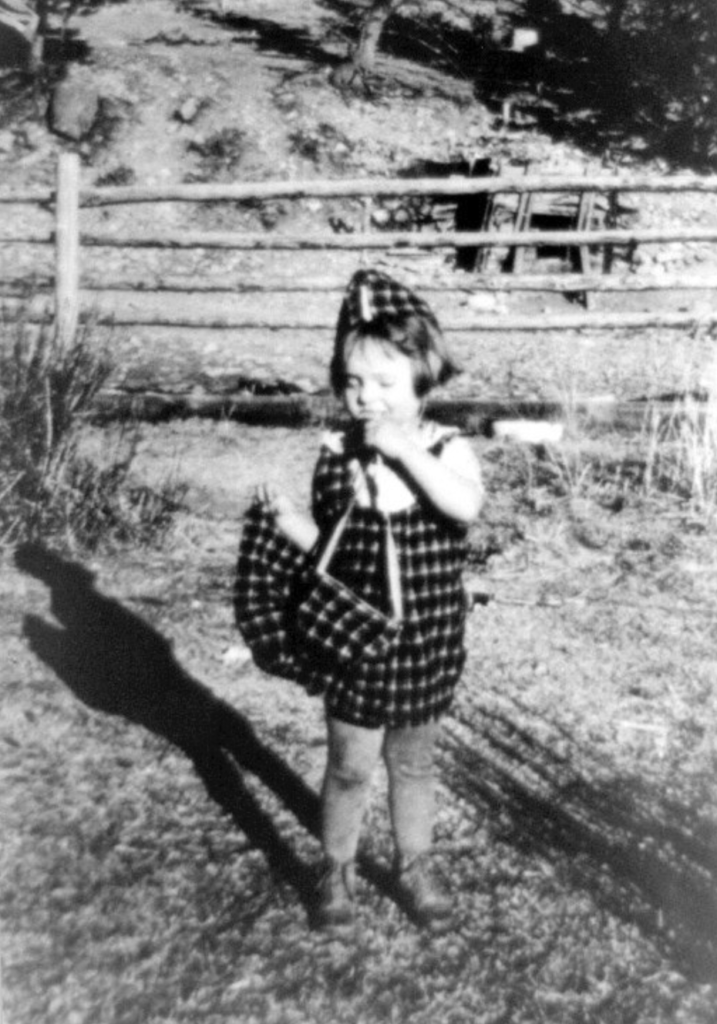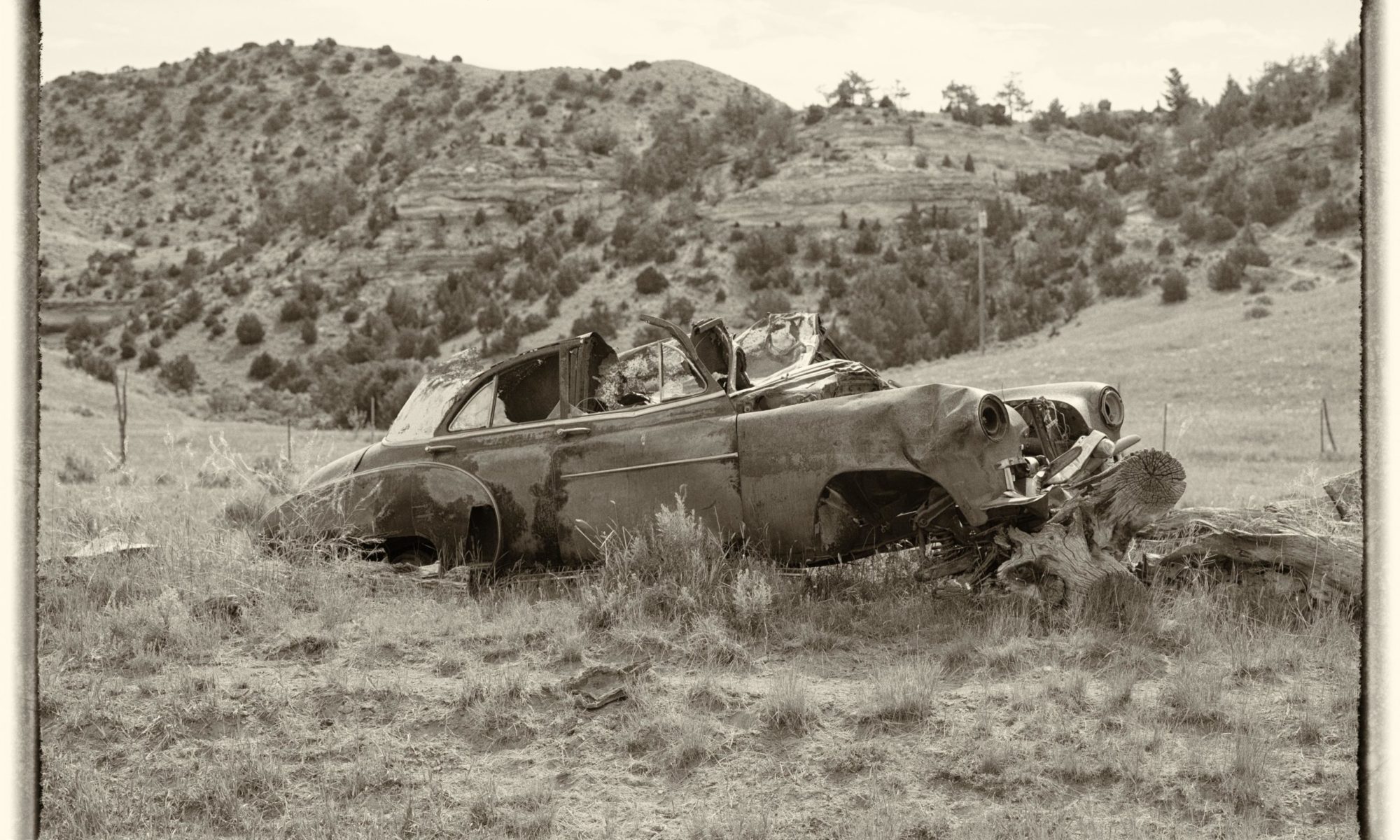The little man of the mountains, my daddy, continues his tale of the houses and buildings in the canyon. His story today is of the chicken house and buildings beside the hill
When the family lived under the burned-out mountain on the other side of the S. weet Grass, they had some shelters for chickens and rabbits.
The report was that weasels and mink killed some of the rabbits. My father did too. His were dressed out and sent to the kitchen. When they moved to the new location in 1925 the rabbits were turned loose. For several years traces of Belgian Hares could be seen in the wild rabbits. I don’t know what kind of shelters they had for the livestock. But they kept chickens there and Mother and Laddie, the Great Dane-Grey Hound, tried to keep the hawks under control. When the dog was in the yard, he protected the hen flock.

the youngest child of the family with “under the hill” behind
Very early on, maybe by moving day in 1925, a log chicken house was built for the new site. This was kept in service until well into the end of 1940 when a new building was erected, and the old building was torn down. Both of these faced the main yard and were under the hill side. The newest one was made of logs sawed on three sides. It sat about 75 feet from the boundary fence. There were two more structures along the underside of the hill. The one closest to the road running up the hill was a cellar. A cellar was an important part of almost every farm or ranch. I think that its mark still remains. In town most houses had a basement. Out in the country root cellars were necessities. They were dug in the ground below the freezing line. Ours was dug into the hillside. The back of it was well underground. The entrance to the cellar was made of two rooms about six feet square with connecting doorways. A mound of dirt covered these two entrance rooms. These helped keep the frost out of the back part of the cellar which had bins for potatoes, carrots, beets, and some years a few cabbage heads. When the outside temperature was twenty or thirty below zero, a kerosene lantern was set up in the produce room. By the time spring weather came potatoes and beets tasted musty and the carrots took a long, long time to cook.
A small red sided board building stood between the root cellar and the chicken house. This was a granary. A sizeable bin across one end held a pile of wheat for the chickens. Sometimes a sack of oyster shell and Purina mash for baby chickens sat on the floor. One year a lumber customer from Two Dot left a heap of potatoes there. The ones that lasted until cold weather were moved to the cellar. Once, when a band of sheep was being taken out of the mountains, Kenneth Fallang left a fat lamb in the granary for Mother.
A brooder house about twelve feet square was put up between Ernest’s Bunk house (George’s) and the incoming road.
